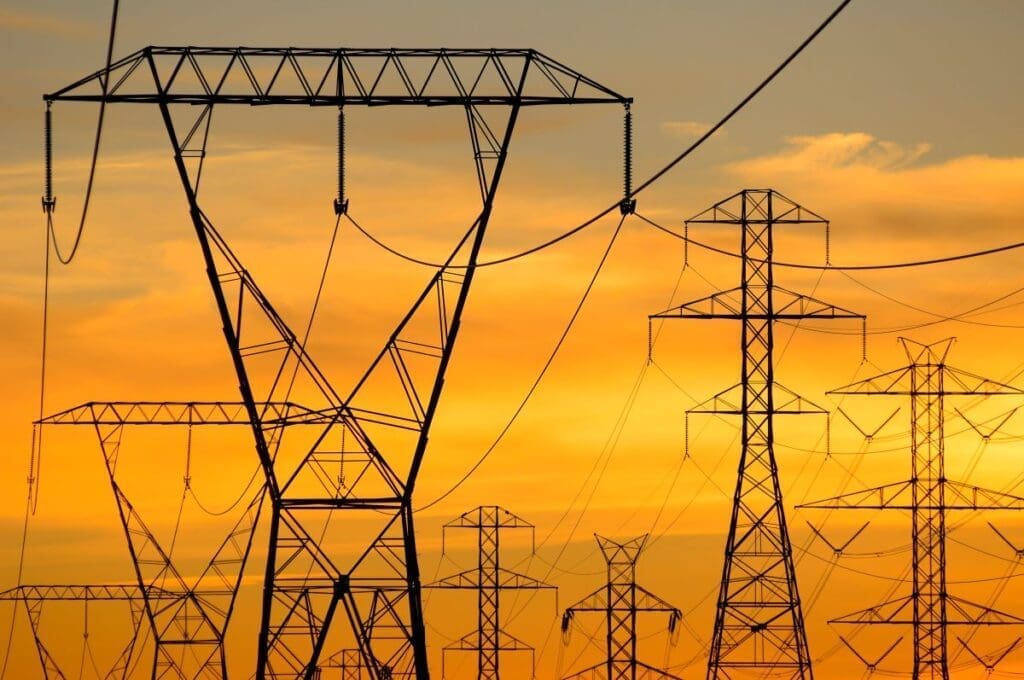Types of power lines built in Poland
 Types of power lines
Types of power lines
Transmission lines are one of the most important elements of the power grid. It is thanks to them that we can freely use electricity in our homes and apartments. Power lines transmit electricity over long distances, in different conditions, so their construction may vary depending on the application. In the article below you will learn what are the types of power lines built in Poland.
What are the types of power lines?
Power transmission lines deliver electricity from one point to another. In the Polish energy system, we distinguish overhead lines and cable lines that run underground.
Overhead transmission lines are wires located above ground level, supported by supporting structures (towers/poles). When designing them, the following should be taken into account:
- current carrying capacity
- wire cross-section and resistance
- maximum operating temperature
- weather conditions in which the power line will be used
- infrastructure constraints
- the topography
It’s important to be aware of the voltage drop that results from the increase in the length of the line. In order to prevent this, the overhead line should be properly selected (e.g. specify its resistance and cross-section).
Underground transmission lines (cable lines) are insulated cables that are buried underground. In addition, if it is necessary, they are placed, for example, in pipes or cable ducts. Cables can be classified according to the structure and type of insulation. There is a specific type of underground cable for each voltage class.
It is important to note that when deciding whether a transmission line should be overhead or underground, environmental conditions, geographical location, line sensitivity and cost must be taken into account. When choosing and designing energy infrastructure, companies such as Eltel Networks, which comprehensively deals with the construction of power lines in Poland, support the investors with the right decision.
Overhead power lines
As mentioned earlier, any overhead power line consists of supporting structures and wires. In addition, it includes insulators and line accessories. The working conductors, as the main element of the overhead line, are attached to the towers (supporting structures) with the use of insulator chains together with line accessories. The installation is completed with lightning conductors, which provide protection against atmospheric discharges.
According to the energy law, we distinguish transmission and distribution networks. The first group includes the highest or high voltage power grids for which the transmission system operator is responsible. On the other hand, the distribution network includes high, medium and low voltage power lines and is the responsibility of the distribution system operator. Thanks to these networks, through overhead power lines, electricity reaches individual and industrial consumers.
Types of overhead power lines – different categories
It should be noted that the types of power lines depend mainly on their category, related to the value of the rated voltage.
- Category I – this category includes the highest voltage power lines with values above 200 kV.
- Category II – it includes high voltage power lines from 110 kV.
- Category III – these are medium voltage power lines with values from 10 to 30 kV.
Cable lines
Electricity is delivered to consumers not only by overhead lines. Cable lines are also used for this purpose, supplying densely built-up and heavily industrialized areas with energy.
Cable lines are laid in the ground, run in cable ducts, pipes, on walls or special structures. In their case, multi-core cables, bundles of single-core cables in a multi-phase system, or sets of various types of cables connected in parallel are used to transmit energy.
As experts from Eltel Networks note, cable lines are a bit more difficult and expensive to design and build. They are also more problematic to repair or replace. On the other hand, cable lines are less faulty and not as sensitive to weather conditions.

Nominal voltages of power lines
When describing the types of power lines, it is necessary to mention the markings of these lines due to their rated voltage. For this reason, transmission lines are divided into:
- highest voltage power lines – HV
- high voltage power lines – HV
- medium voltage power lines – MV
- low voltage power lines — LV
Construction of power lines
Transmission lines with different voltages are used to build the power grid. This is due to the fact that electricity of different voltage must be delivered from the power plant to the consumers. To build power lines we use:
- highest voltage power lines (HV, 220 and 400 kV in Poland), which transfer energy from the power plant to local highest/ high voltage substations, where the voltage is reduced to 110 kV
- high voltage power lines (HV, in Poland with a voltage of 110 kV), used for power distribution over distances not exceeding several dozen kilometers to HV/MV substations
- medium voltage power lines (MV, in Poland with voltages of 10, 15, 20 or 30 kV), through which energy is sent to MV/LV transformers
- low voltage power lines (LV, low voltage of 400 and 230 V), through which energy is delivered to end users
It should be remembered that the power system must be properly designed and built and be able to change the directions of flows and the amount of transmitted energy. For this reason, it is important to use power lines with the necessary parameters.